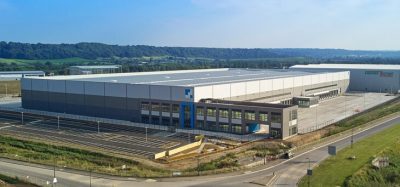Is that soya sustainable?
- Like
- Digg
- Del
- Tumblr
- VKontakte
- Buffer
- Love This
- Odnoklassniki
- Meneame
- Blogger
- Amazon
- Yahoo Mail
- Gmail
- AOL
- Newsvine
- HackerNews
- Evernote
- MySpace
- Mail.ru
- Viadeo
- Line
- Comments
- Yummly
- SMS
- Viber
- Telegram
- Subscribe
- Skype
- Facebook Messenger
- Kakao
- LiveJournal
- Yammer
- Edgar
- Fintel
- Mix
- Instapaper
- Copy Link
Posted: 8 July 2021 | Chris Elliott | No comments yet
With the impacts of soya production well known, many have turned to sustainable methods, but how do you separate the genuine claims from the fakes?


It’s hard to think of an agricultural crop that is more controversial than soya. In excess of 350 million tonnes is produced each year on a land area of around 125 million hectares;1 to put this into context, that’s five times more land than the entire United Kingdom occupies.
Estimates are that between 70 and 80 percent of this is used to feed poultry, cattle and farmed fish, and around 20 percent to produce biodiesel. Just five to 10 percent goes directly into food production.
Soya consumes a huge amount of energy globally and discussions on its impact have been on-going for some time. The detrimental effects in terms of greenhouse gas emissions, deforestation and huge loss of biodiversity have been central to this debate.
Most soya comes from the Americas and nearly 50 percent of all production comes from Brazil and Argentina. The growth of the soya industry has been quite astounding, with production in Brazil increasing by more than 400 percent over the past 20 years. A considerable amount of this growth has come from the on-going and relentless destruction of tropical rainforests.
Just five to 10 percent goes directly into food production.
There is a lot of work being done across the globe to support the soya industry to move to more sustainable production methods. These are all highly commendable and have made progress, however, the deforestation continues and further action is needed.
Identifying the soya cheaters
Food manufacturers and retailers alike have signed pledges to source only sustainable soya, but, like many supply chains, there will be those trying to cheat and make false claims. In this case, that the soya they are selling comes from such sustainable sources when in truth they do not.
Audits and inspections will play an important role in trying to certify the origin and credentials of soya imports, but this can only be part of robust certification programmes. In terms of ensuring the integrity of feed and food supply chains, science and technology can act as a verifier, helping to ensure that the information provided is accurate and trustworthy.
I have been researching this area for several months and come across some amazing work – of particular note is a system which uses satellite technology to track where deforestation is occurring and what types of crops are being planted.
The IT revolution offers the potential for traceability systems to move away from paper-based systems to digital methods – arguably a more reliable and precise way to record and store data, as well as enabling information to be shared across different sites/between different parties securely.
I also believe there’s a massive role for analytical chemistry to augment these technologies and this is something my team and I have been working on.
Building a chemical map
I am extremely fortunate to have been recently awarded an Agilent Corporation Thought Leaders award. These awards promote fundamental advancements in research of importance to the world by contributing financial support, cutting edge technology platforms, and a team of experts in Agilent to support the research.
As part of my award, my team within the Institute for Global Food Security and I have embarked on a project to determine not only where in the world soya is grown, but also if it has been grown in an area that has been subject to deforestation. In order to do this, we have started to engage with an array of stakeholders who we believe we can form strong partnerships with – be they NGOs, industries or government agencies.
In terms of next steps, we’ll be looking to source soya from all over the world, this will give us the information we need to create a ‘chemical map’ that identifies the specific region in which the soya was grown. Once we have done this, we can transfer our testing methods to laboratories everywhere to support the certification of genuine sustainable soya and identify those who try to cheat. I therefore call on you to join us in this mission and I’d be delighted to talk with anyone – individual, company, NGO – who wants to achieve the same end goal. It is only with collaboration that we can stop harmful deforestation and ensure the fakes don’t triumph.
References
- www.statista.com/statistics/263926/soybean-production-in-selected-countries
Related topics
Related organisations
Agilent, Institute for Global Food Security (IGFS), Queen's University Belfast









